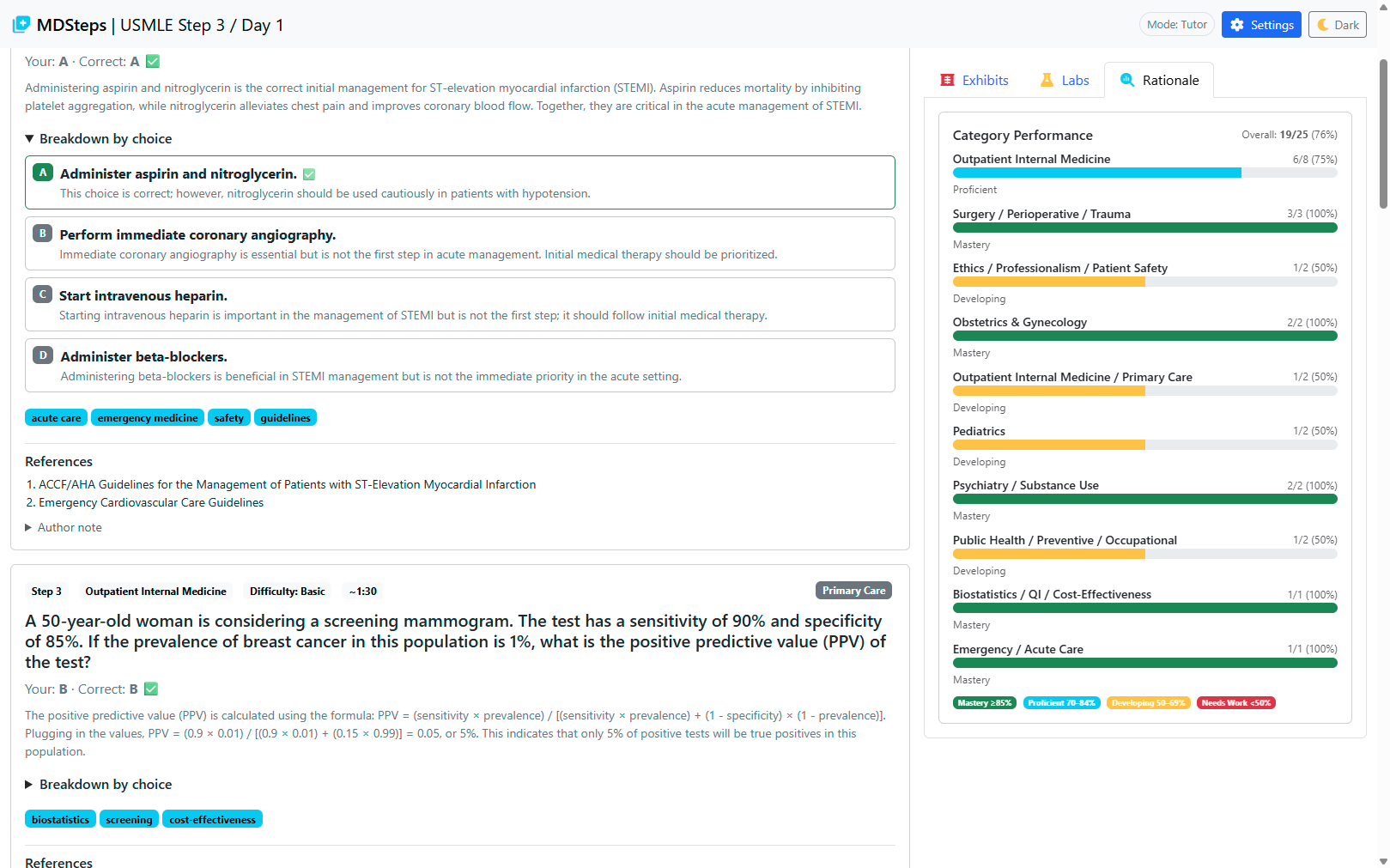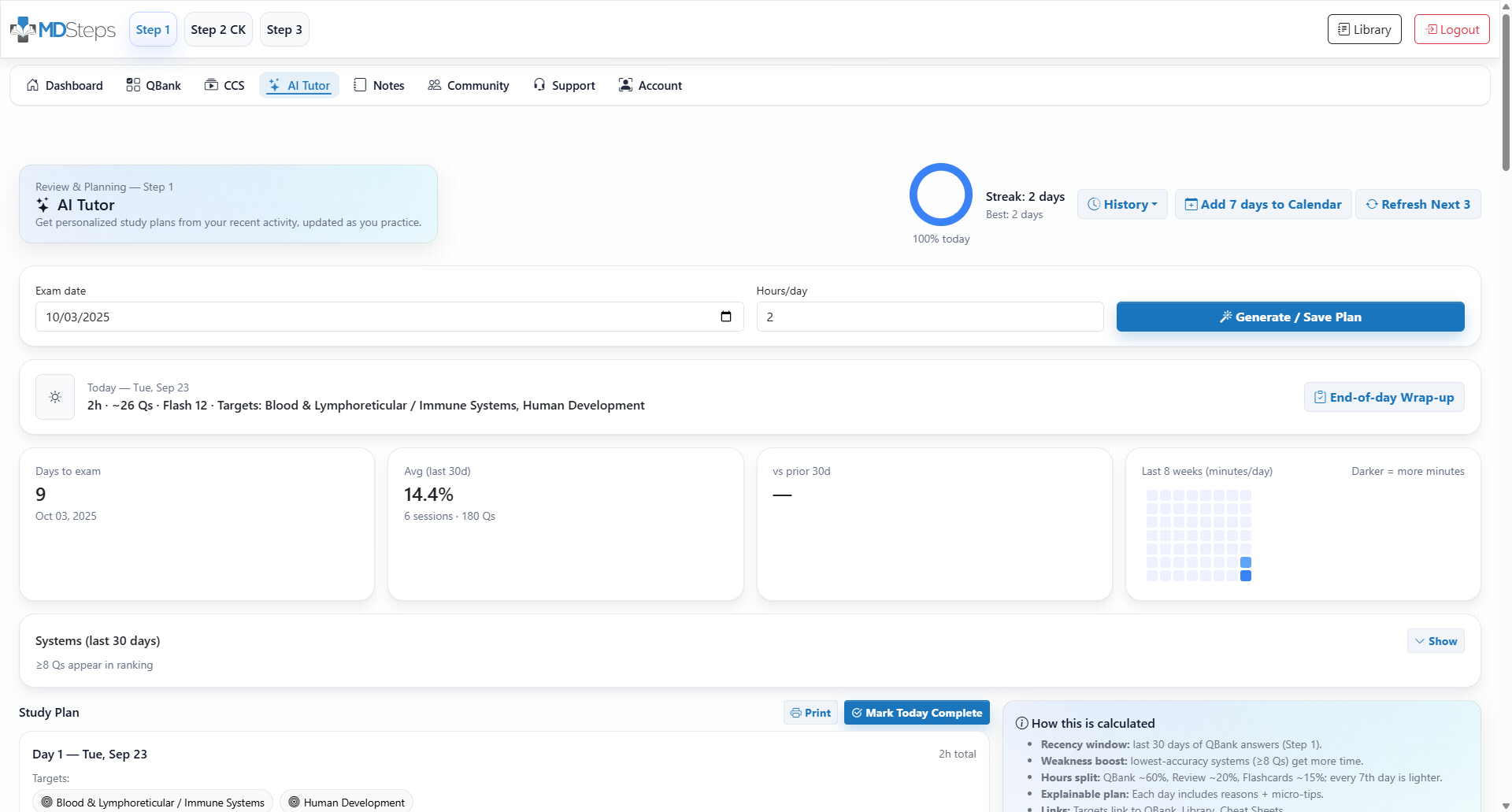USMLE® Step 1
Master the foundations that power clinical thinking.
Step 1 stresses mechanisms, pathology, and physiology across organ systems. MDSteps turns basic science into pattern recognition with an adaptive QBank, image‑rich items, and a readiness dashboard that tells you exactly where to focus.
What Step 1 really tests
- Integrating biochem, physiology, and pathology to explain findings.
- Recognizing classic associations and look‑alikes under time pressure.
- Applying mechanisms (not trivia) to management next steps.
- Interpreting images: histology, micro, radiology, gross path.
How we create a solution that works
From first principles to fast decisions
Our adaptive engine keeps you in the “just hard enough” zone while resurfacing weak systems at spaced intervals. Items are built mechanism‑first with why‑right/why‑wrong rationales so you understand the how and the why, not just the letter.
- Mechanism‑anchored vignettes linking basic science → clinical consequence.
- Image‑heavy items (micro, pathology, radiology) with zoomable figures.
- Look‑alike flags to prevent classic confusions (e.g., ATN vs. prerenal).
- Spaced resurfacing of misses and low‑confidence topics.
How adaptation works

What Step 1 entails
Discipline & system coverage
Foundational sciences
- Biochemistry & genetics (enzymopathies, inheritance, pharmacogenomics)
- Physiology (hemodynamics, pulmonary mechanics, renal handling)
- Immunology & microbiology (hypersensitivity, vaccines, bugs & drugs)
- Pathology (inflammation, neoplasia, classic histopath)
- Pharmacology (MOA → adverse effects → antidotes)
Systems‑based integration
- Cardio • Pulm • Renal • GI • Endo • Heme/Onc • MSK • Neuro/Psych • Repro
- Image interpretation: histology, Gram stains, EM, radiology pearls
- High‑yield equations & quick calcs embedded in items
- NBME‑like pacing with mixed, confounder‑rich blocks
Features tuned for Step 1
Everything you need to turn mechanisms into mastery.

Know where to focus
AI‑generated Step 1 study plans
Tell us your date, hours/day, and comfort by system. We’ll build a plan that balances review and new learning, then sync it to your calendar. Plans adjust as your data changes.
- Targets weak systems with interleaving for retention.
- Mixes mechanism refreshers with exam‑style blocks.
- Calendar sync (Google/iOS) with reminders.
Step 1 — common questions
Is Step 1 still pass/fail? Should I care about % correct?
How many daily questions should I do?
Do you include equations & quick calcs?
How are items different from Step 2/3?
Can I turn misses into flashcards?
Will this work on my phone?
Turn foundations into scoring power.
Practice Step 1 the way it’s tested—mechanism‑first items, image interpretation, and analytics that point to your next best step.
- Mechanism‑first adaptive QBank
- Image‑rich items with annotated figures
- Readiness dashboard & study plan sync